

So, I tried that Pure Electric Pure Flux One bike and it is good, people. That is a relief as I said it looked like a winner before I'd tried it, so I would feel like a bit of a fool if it turned out to be crap. Testing e-bikes on a short term basis is a bit like a transport-based groundhog day as they are all broadly similar. They have the same top speed, and it's not a very speedy one – a sedate 15.5mph is the limit in the UK, Europe and Australasia, although in parts of America it could be as high as, ooh, 20mph.
The first electric bike from e-scooter specialist Pure Electric has three things going for it: a low price, unusually cool looks for an e-bike, and really quite extreme simplicity. If you're considering taking up cycling for the first time, post-lockdown, it's a perfect choice. If, like me, you have cycled before but become so unfit that electrical assistance is now very much required, it's also a sound option.
I've been riding my Pure Flux One for 2 weeks now, and other than its stupid name, I've enjoyed it a lot. It's not the best electric bike but it is probably the best cheap electric bike, taking a stripped-down approach that means it doesn't feel like too many compromises have been made to get the price under £1,000.
- Buy Pure Flux One at Pure Electric for £999
- Pure Electric has two new bikes: Pure Free City and Pure Free Step
- Halfords’ new cheap ebike the Carrera Impel is on sale NOW!
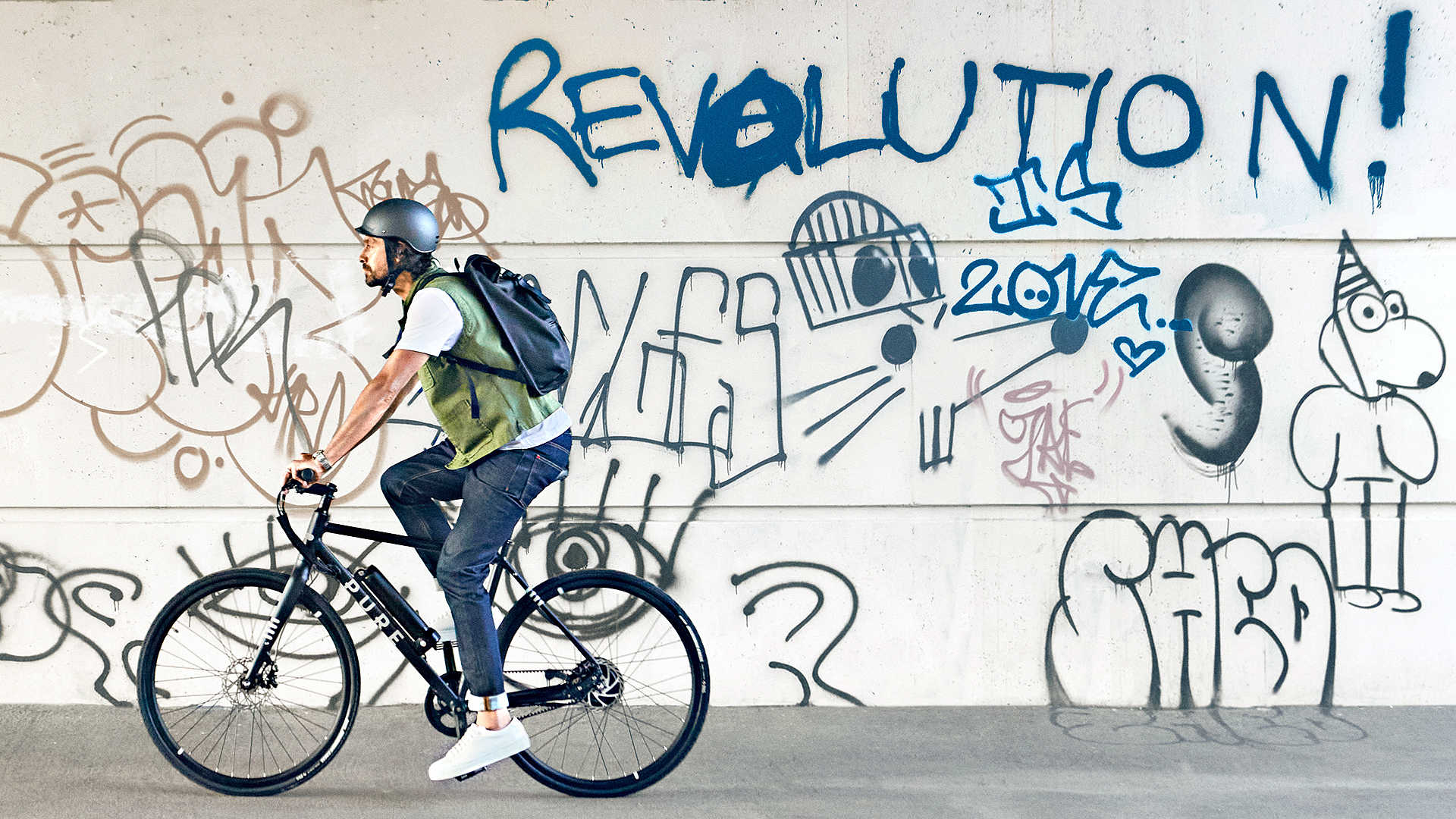
Pure Electric subtly suggesting that their bike is revolutionary, here
The first thing to say about the Pure Electric Pure Flux One is that it has very hip styling. Lots of black, with Pure's logo and some go-faster stripes picked out in reflective paint. That means you can have your black cake and eat it, because people will say, 'Wow, look at this cool dude on his all-black bike,' but they won't then say, 'Oh no, the cool dude got run over by a truck because his bike was invisible after dark.'
Having said that, unlike a lot of recent electric bikes there are no lights built into the Pure Flux One. They were obviously thinking of having them, because there's an icon and on/off switch for lights built into the little monochrome display perched on the handlebars. But they evidently changed their minds and there are no built-in lights, so get yourself along to our guide to the best bike lights before you buy.
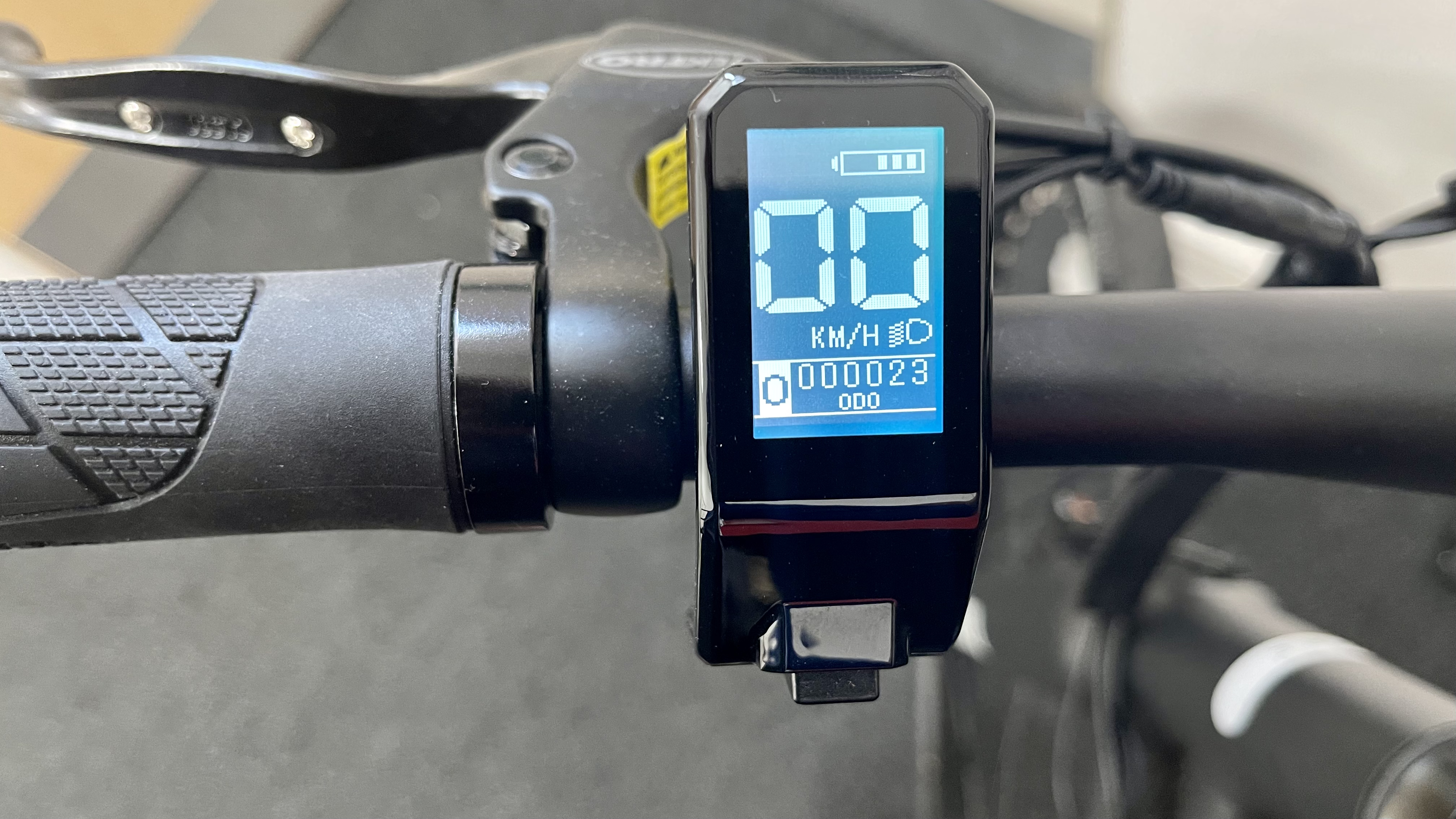
The display also tells you your speed, which is all but pointless as your speed will mainly be 15.5mph/25kph. You also get a basic battery gauge – the range is only 25 miles max, so it's worth keeping an eye on this. You can recharge it to 80% of capacity in three hours or fully charge it in five.
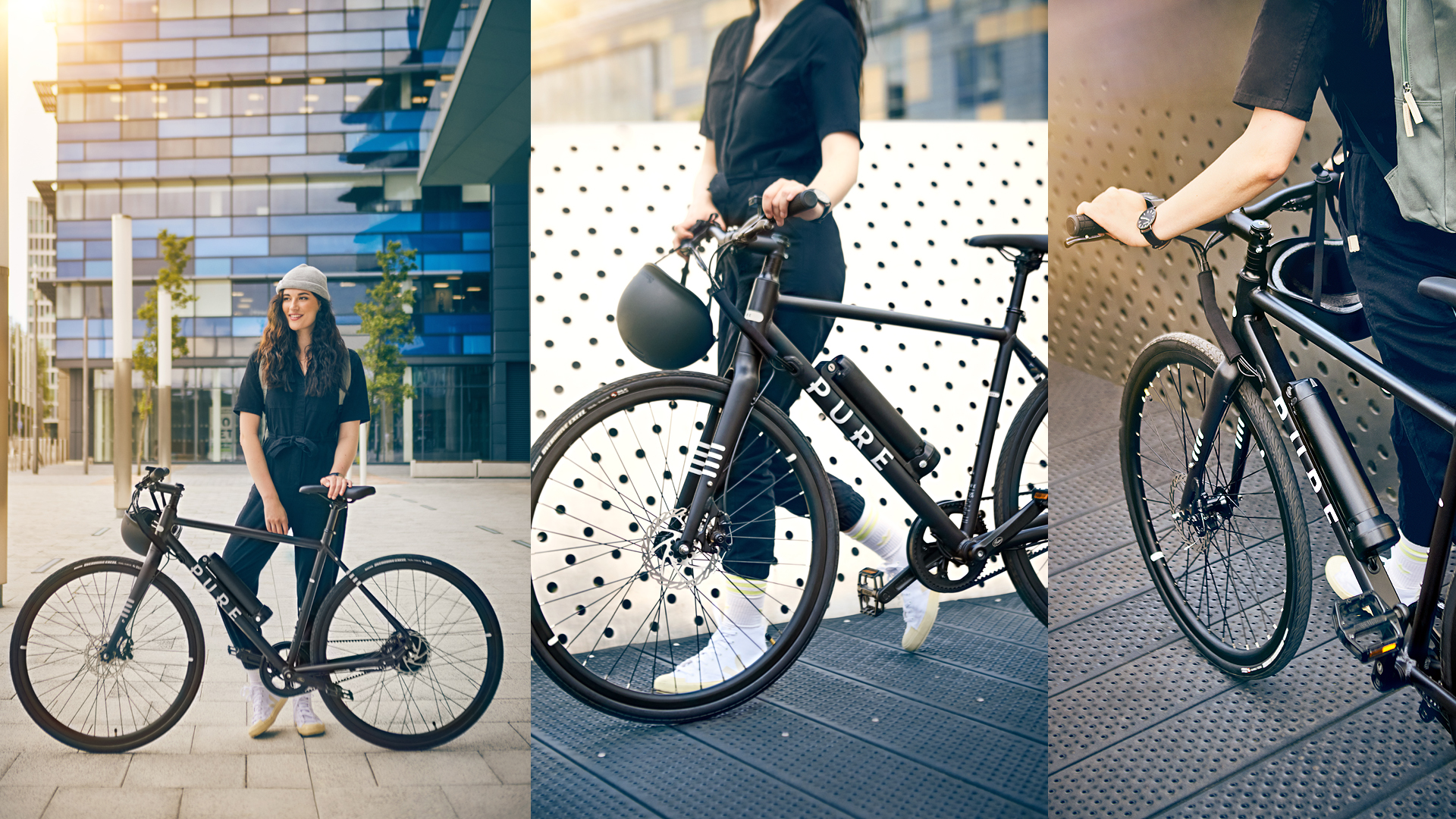
Despite this lady being in the press photos, Pure Flux is clearly more of a manly man's bike for blokey blokes
The reason for this lack of longevity is that the battery is, as you can see here, really rather small – it's the thing that looks like a Thermos flask strapped to the frame. It's also very easy to remove, as a security measure – although do also use a bike lock, as it's still perfectly possible to ride off on a Flux One even when it's powered down.
Sign up to the T3 newsletter for smarter living straight to your inbox
Get all the latest news, reviews, deals and buying guides on gorgeous tech, home and active products from the T3 experts
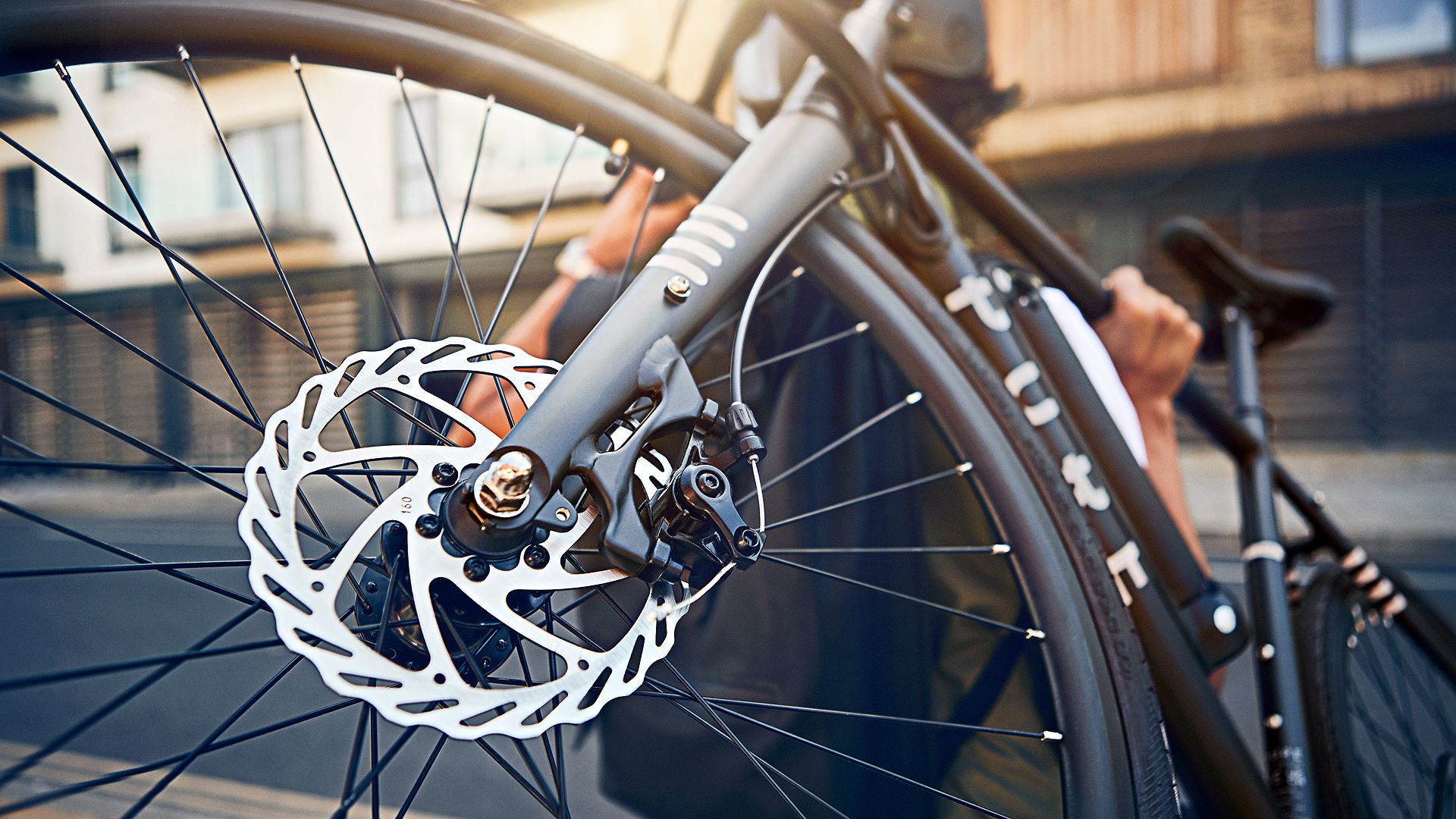
There are disk brakes, although they are mechanical rather than hydraulic – still preferable to calliper brakes though
The Pure Flux One ride experience is extremely simple and pretty good fun. There are no gears, no chain – a carbon belt is used instead, so no mucky trousers for you – and no app. On bikes such as Gocycle's and Hummingbird Electric, the app lets you adjust torque settings and various other parameters but Pure Electric realises that this kind of sophistication/fiddliness is just not required here, in an entry-level e-bike designed for ease of use.
Instead it provides three levels of electrical assistance that are capped at 15, 20 and 25kph – that's 9, 12.5 or 15.5mph. You can also turn the assistance off entirely and ride it like an unusually hefty single-speed bike. This is a great example of the 'light e-bike' paradox. The Flux One weighs 17.5kg including the battery – that's only 1.35kg. Pure Electric describes this as 'lightweight' and sure, by e-bike standards, it is – a lot of them weigh 20kg and up. However, compared to a single-speed, non-electric bike, 17.5kg is by no means light.
That aside, I really enjoyed riding the Pure Flux One. In stark contrast to the kind of folding, futuristic, feature-packed, laser-guided, AI-powered bikes I've been bombarded with recently, Pure Electric's bike simply looks, rides and behaves like… a bicycle. Nobody has come up and said, in a vaguely sinister way, 'That looks like an expensive bike, mate,' when I've been out on it, for instance. It's got full-sized wheels, good-enough brakes, stylish-enough 'hybrid' bike styling and it looks and handles really well.
As it's one size fits all, this does involve a bit of saddle raising if you are tall, like me, or a bit of saddle dropping if you are a shortarse – Pure Electric says the Pure Flux One will suit riders from 5’7” / 1.7m to 6’2” / 1.88m. That's fine. If you want to talk 'geometry' I'd say the saddle is a bit too near the front wheel, because it kept catching on the end of my shoe when I was stationary, with the wheel turned. I didn't have any problems when riding though, and it does make for pretty tight cornering.
The riding position is upright but not excessively so, and there is enough flex in the frame to make it a comfortable enough ride, even when taking on London's furrowed and pockmarked Hellscape of a road network.
There is an issue if you want to go above 25kph/15.5mph. Due to the weight and the absence of gears, this involves pedalling like mad, which isn't really the utopian e-bike ideal. I guess your reaction to this depends on whether you consider 15.5mph to be fast enough or not. On a long straight, I find it a bit of a chore but for everyday, stop/start urban riding, it's probably plenty, for most folks' purposes.
The absence of gears also means going up hills, particularly steep ones, is harder than it needs to be, but I suspect most e-bike owners prefer the idea of still getting a bit of a workout when riding – otherwise they'd buy a scooter instead.
Speaking of which, another benefit of e-scooter specialist Pure Electric's first e-bike is that it won't be impounded by the police. Also, pedestrians won't eye you suspiciously and clutch their iPhones tightly as you pass them by. Not to stereotype anyone or anything, but my last experience of e-scooters was seeing a man on a bike pursuing one down the Edgware road shouting 'GIVE ME BACK MY PHONE!' Maybe that is just a London thing, though.
I don't really have any exciting anecdotes to recount about riding the Pure Flux One because it is just a chilled out, straightforward experience. Cruising along at 15.5mph feels extremely safe. However, the electric acceleration gives you peace of mind that you can pull away from stressful situations such as traffic lights and right turns in the face of advancing traffic. Or, if you are anywhere other than the UK, left turns in the face of advancing traffic.

Wheeeeee!
Overall, I found the Pure Flux One to be fun to ride and great value for money. The low cost naturally makes me think, 'how long will the electrical parts last?' However the simple construction also makes me think they can be replaced relatively cheaply, unlike more high-end electric bikes. It should be easy to service, for the same reason. Pure Electric provides a two-year warranty for the vulnerable parts, with a bonus year on the frame and fork. Okay, I have literally never heard of a bike's frame or fork breaking within three years, but it's a nice gesture.
With its slick styling, fun ride, excellent value price and – hopefully – consistent availability via Pure Electric's shop and website, I can see Pure Flux One being a massive success. The current market leader for bikes at this price is Gtech's City Electric but Pure Electric's smarter, newer rival is a way more attractive proposition.
Duncan is the former lifestyle editor of T3 and has been writing about tech for almost 15 years. He has covered everything from smartphones to headphones, TV to AC and air fryers to the movies of James Bond and obscure anime. His current brief is everything to do with the home and kitchen, which is good because he is an excellent cook, if he says so himself. He also covers cycling and ebikes – like over-using italics, this is another passion of his. In his long and varied lifestyle-tech career he is one of the few people to have been a fitness editor despite being unfit and a cars editor for not one but two websites, despite being unable to drive. He also has about 400 vacuum cleaners, and is possibly the UK's leading expert on cordless vacuum cleaners, despite being decidedly messy. A cricket fan for over 30 years, he also recently become T3's cricket editor, writing about how to stream obscure T20 tournaments, and turning out some typically no-nonsense opinions on the world's top teams and players.
Before T3, Duncan was a music and film reviewer, worked for a magazine about gambling that employed a surprisingly large number of convicted criminals, and then a magazine called Bizarre that was essentially like a cross between Reddit and DeviantArt, before the invention of the internet. There was also a lengthy period where he essentially wrote all of T3 magazine every month for about 3 years.
A broadcaster, raconteur and public speaker, Duncan used to be on telly loads, but an unfortunate incident put a stop to that, so he now largely contents himself with telling people, "I used to be on the TV, you know."
-
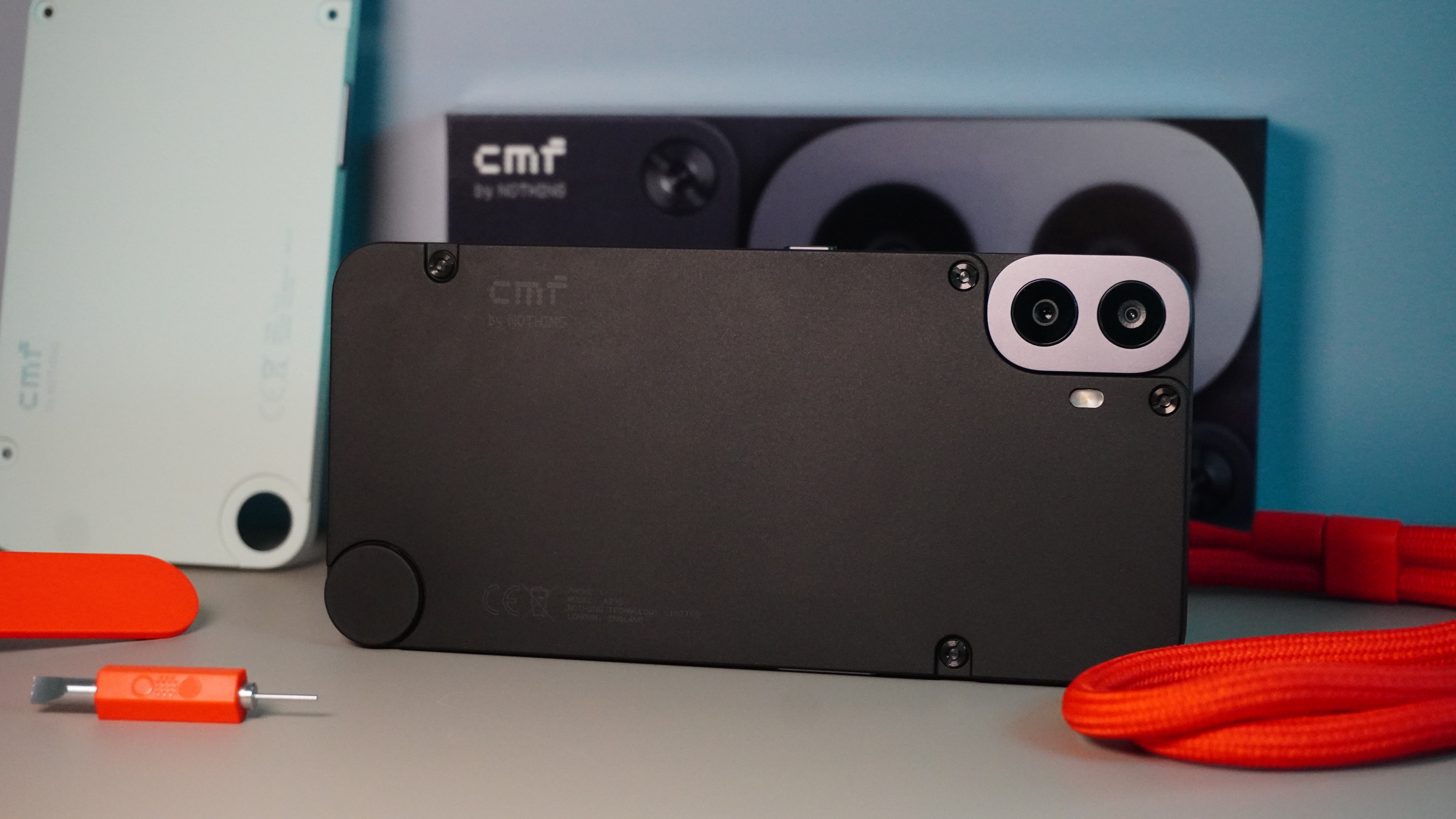 Nothing's next phone could be a budget powerhouse, thanks to this confirmed hardware detail
Nothing's next phone could be a budget powerhouse, thanks to this confirmed hardware detailOfficial details reveal more about the next phone coming from Nothing
By Chris Hall
-
 The biggest mistake you’re making when cooking Easter lamb in an air fryer
The biggest mistake you’re making when cooking Easter lamb in an air fryerCooking Easter lunch in your air fryer? Don’t make this mistake…
By Bethan Girdler-Maslen